Abstract
Diurnal variations in leaf water potential, diffusion resistance, relative water content, stem diameter, leaf temperature, and energy balance components were measured in cotton (Gossypium hirsutum L. var. Lankart 57) during drought stress under field conditions. A plot of leaf water potential against either relative water content or stem diameter during the 24-hour period yielded a closed hysteresis loop. The relation between cell hydration and evaporation is discussed.
Despite low soil water potential in the main root zone, significant plant evaporation rates were maintained. Root absorption rates as a function of soil depth were calculated from water content profiles measured with a neutron probe. The maximal root absorption rate of 3.5 × 10−3 day−1 occurred at the 75-centimeter depth, well below the main root zone.
Stomatal resistance of individual leaves during the daylight hours remained nearly constant at 2.5 seconds centimeter−1 even though leaf water potentials approached −30 bars. A growth chamber study indicated stomatal closure occurred at potentials near −16 bars. Possible implications of high soil water stress in relation to stomatal function and growth are discussed. Based on an energy balance method, the actual to potential plant evapotranspiration ratio was 0.43 for the 24-hour period, indicating partial stomatal closure. A surface resistance, rs, of 4.0 seconds centimeter−1 was calculated for the incomplete canopy with the use of the energy balance data. Alternatively, a canopy resistance of 1.3 seconds centimeter−1 was attained from a relationship between leaf area and stomatal resistance of individual leaves. If the soil resistance was assumed to be very large and the canopy resistance was weighted for the fractional ground cover of the crop, the calculated surface resistance was 4.3 seconds centimeter−1. Under these conditions, the two independent estimates of rs were in essential agreement.
Full text
PDF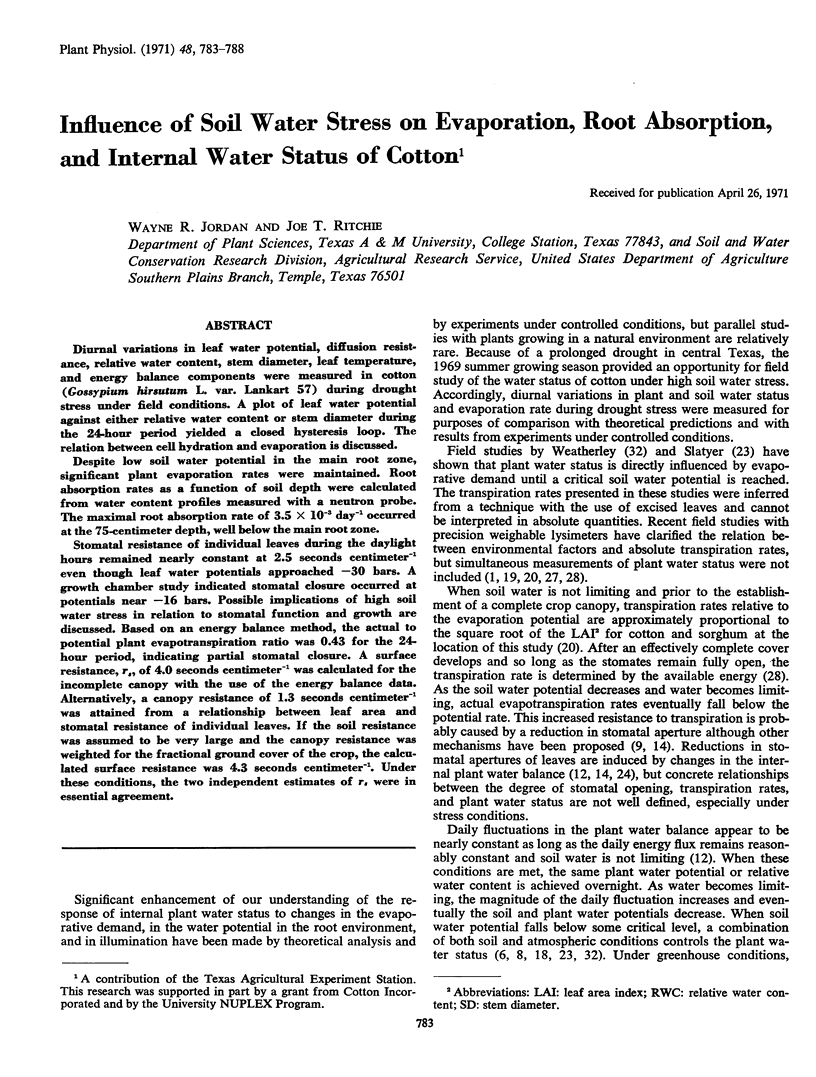
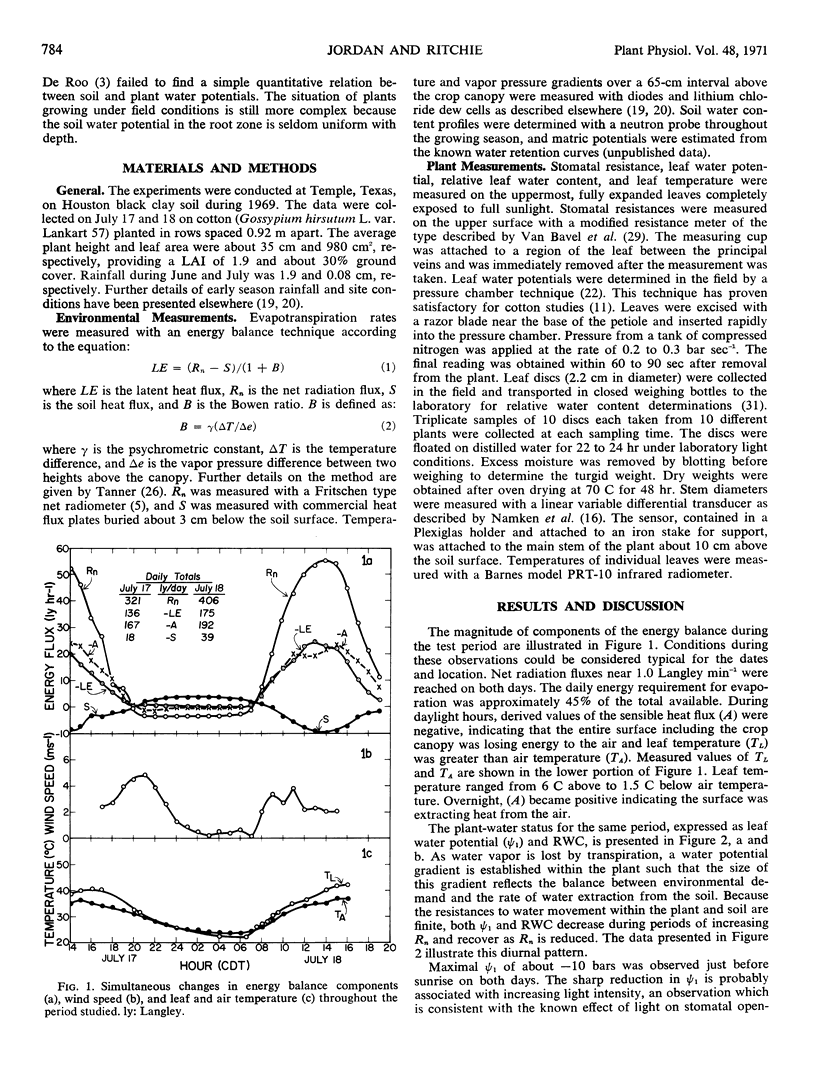
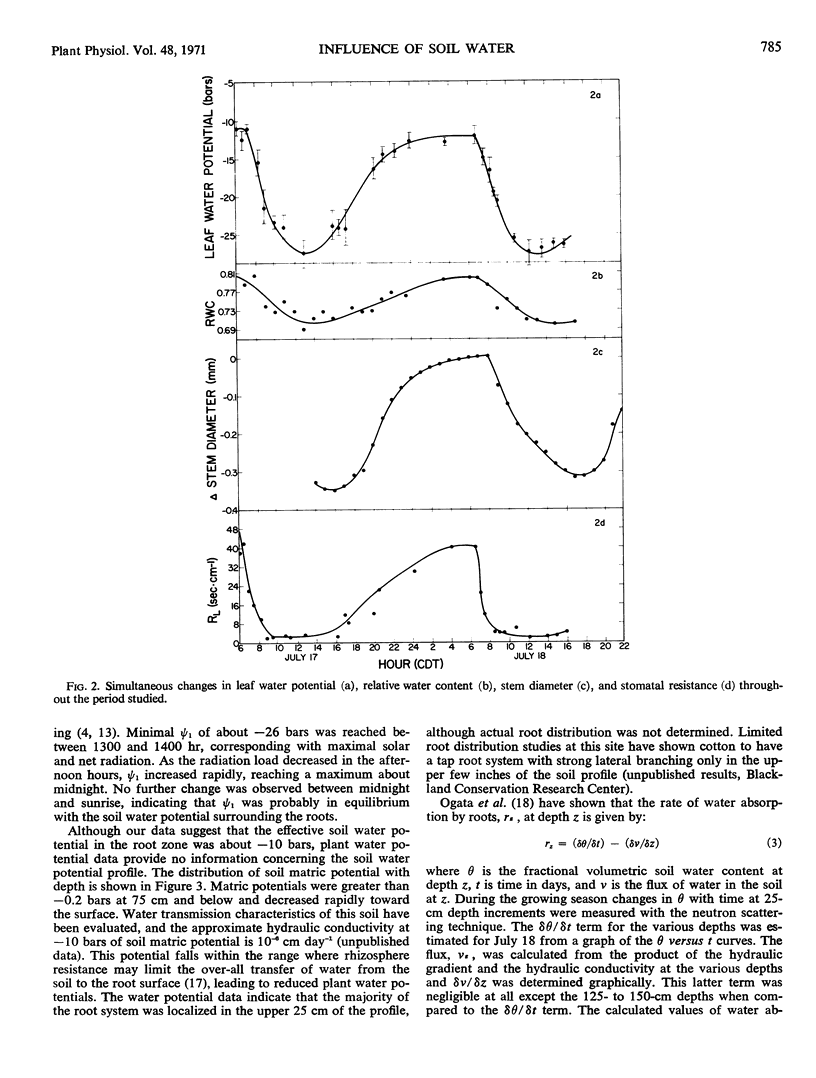
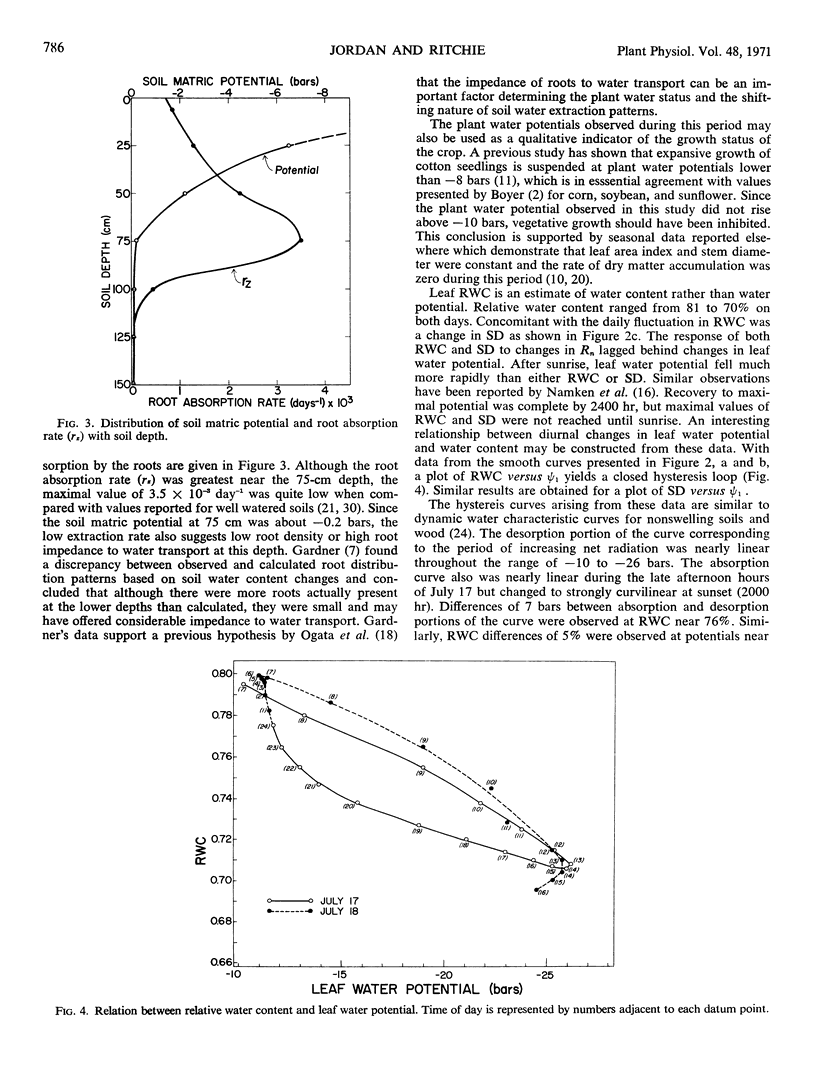
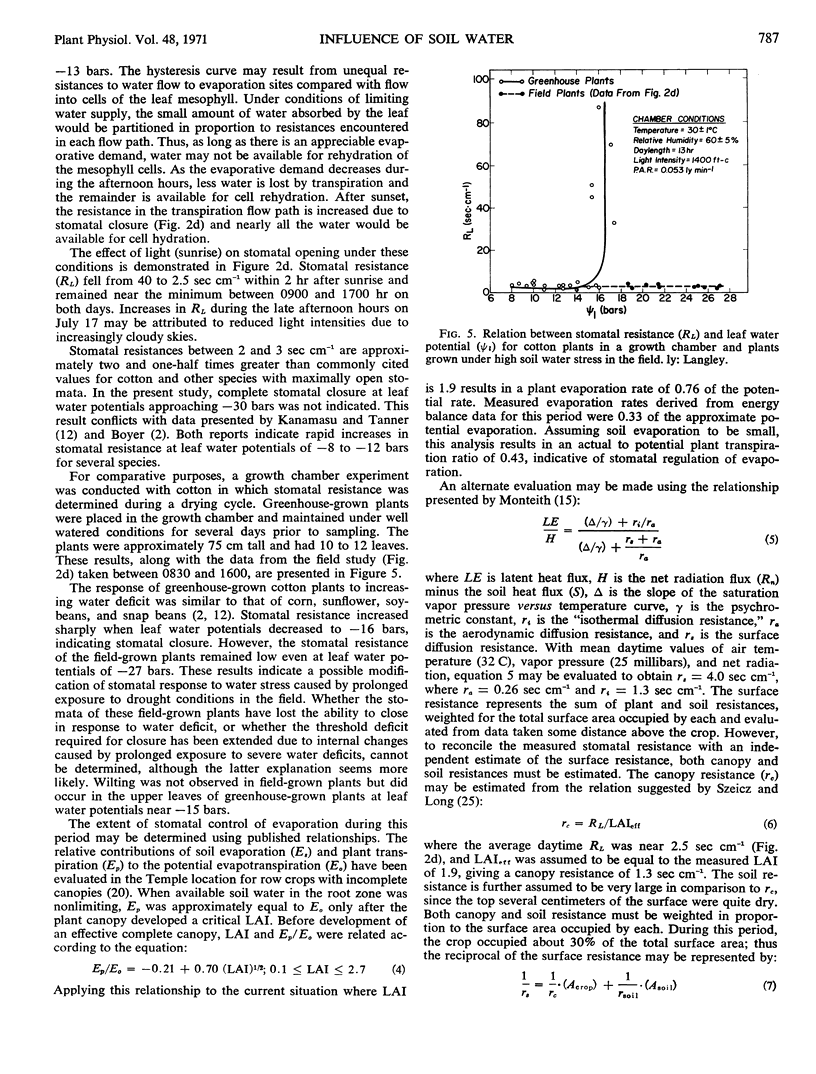
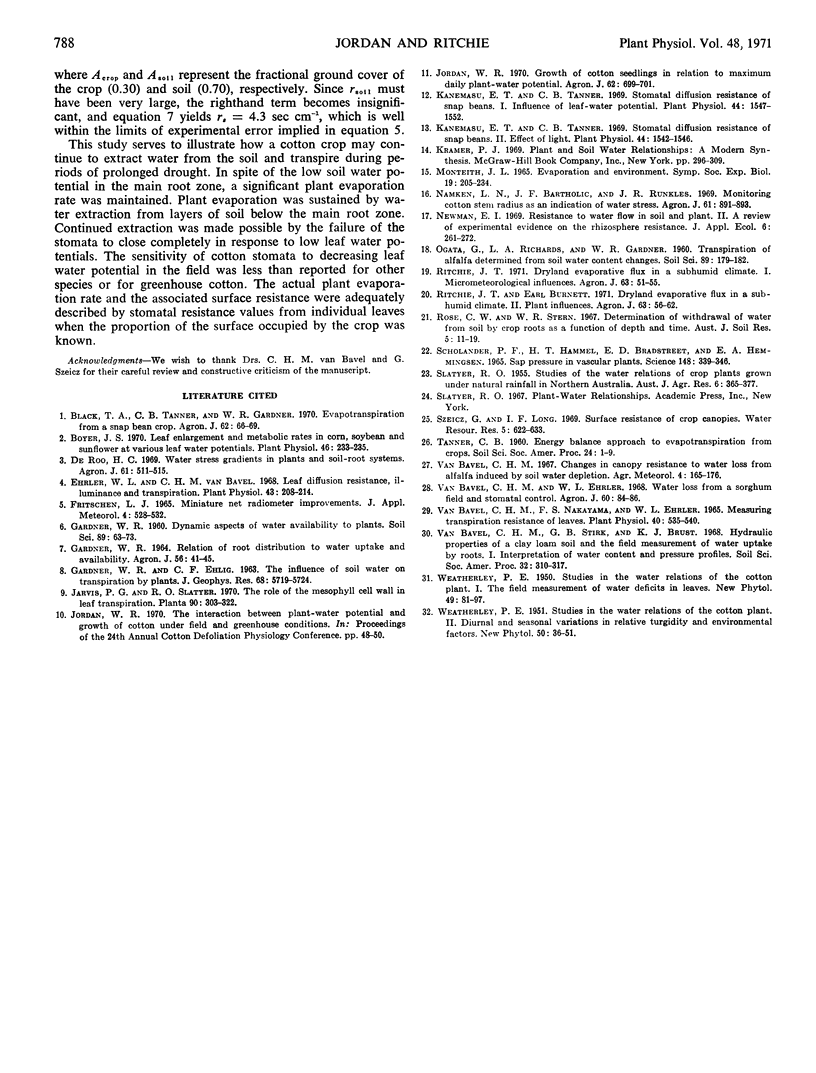
Selected References
These references are in PubMed. This may not be the complete list of references from this article.
- Boyer J. S. Leaf enlargement and metabolic rates in corn, soybean, and sunflower at various leaf water potentials. Plant Physiol. 1970 Aug;46(2):233–235. doi: 10.1104/pp.46.2.233. [DOI] [PMC free article] [PubMed] [Google Scholar]
- Ehrler W. L., van Bavel C. H. Leaf diffusion resistance, illuminance, and transpiration. Plant Physiol. 1968 Feb;43(2):208–214. doi: 10.1104/pp.43.2.208. [DOI] [PMC free article] [PubMed] [Google Scholar]
- Kanemasu E. T., Tanner C. B. Stomatal Diffusion Resistance of Snap Beans. II. Effect of Light. Plant Physiol. 1969 Nov;44(11):1542–1546. doi: 10.1104/pp.44.11.1542. [DOI] [PMC free article] [PubMed] [Google Scholar]
- Kanemasu E. T., Tanner C. B. Stomatal diffusion resistance of snap beans. I. Influence of leaf-water potential. Plant Physiol. 1969 Nov;44(11):1547–1552. doi: 10.1104/pp.44.11.1547. [DOI] [PMC free article] [PubMed] [Google Scholar]
- Monteith J. L. Evaporation and environment. Symp Soc Exp Biol. 1965;19:205–234. [PubMed] [Google Scholar]
- Scholander P. F., Bradstreet E. D., Hemmingsen E. A., Hammel H. T. Sap Pressure in Vascular Plants: Negative hydrostatic pressure can be measured in plants. Science. 1965 Apr 16;148(3668):339–346. doi: 10.1126/science.148.3668.339. [DOI] [PubMed] [Google Scholar]
- van Bavel C. H., Nakayama F. S., Ehrler W. L. Measuring Transpiration Resistance of Leaves. Plant Physiol. 1965 May;40(3):535–540. doi: 10.1104/pp.40.3.535. [DOI] [PMC free article] [PubMed] [Google Scholar]


